
16 Charles Richard Stelck
18 Ancient seas, ancient lands — an adventure through the Cretaceous
26 2016 CSPG International Core Conference Wrap Up
$4.00 SEPTEMBER 2016 VOLUME 43, ISSUE 08 Canadian Publication Mail Contract – 40070050 RETURN UNDELIVERABLE CANADIAN ADDRESSES TO: CSPG – 110, 333 - 5 Avenue SW Calgary, Alberta T2P 3B6

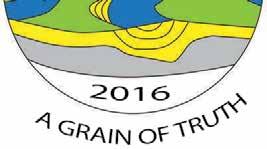



Our understanding of Clastic Sedimentology has made huge leaps over recent decades. Clastic sediments make up almost 50% of the Earth’s surface, and the study of recent and ancient clastic rocks allows us to recognize th e processes that shape them. The goal of the conference is to showcase the latest thinking and ideas relating to these sediments.

Land Ho!
Andrew Miall & Steve Hasiotis
Beach and Beyond
ChrisFielding&KerrieBann
SESSIONS INCLUDE:
Gateways to the Sea
MurrayGingras&ShahinDashtgard
Slope and Basin
Steve Hubbard & Bill Arnott
Mud Matters
GuyPlint&RogerSlatt

INDIVIDUAL RATES

Early Bird Registration Member Registration
Non-Member Registration
Early Bird Professor & Student
Regular - Professer & Student Speaker Registration
GROUP RATES
Bulk Registration Package (3 Registrations)
Bulk Registration Package (5 Registrations)
Location: Banff Conference Centre | Banff, AB





REGISTER TODAY
$800.00 $900.00 $950.00 $500.00 $800.00 $750.00 $2,400 $4,000
CSPG OFFICE
#110, 333 – 5th Avenue SW
Calgary, Alberta, Canada T2P 3B6
Tel: 403-264-5610
Web: www.cspg.org
Please visit our website for all tickets sales and event/course registrations Office hours: Monday to Friday, 8:00am to 4:00pm
The CSPG Office is Closed the 1st and 3rd Friday of every month.
OFFICE CONTACTS
Membership Inquiries
Tel: 403-513-1234 Email: membership@cspg.org
Advertising Inquiries: Kristy Casebeer
Tel: 403-513-1233 Email: kristy.casebeer@cspg.org
Sponsorship Opportunities: Lis Bjeld
Tel: 403-513-1235 Email: lis.bjeld@cspg.org
Conference Inquiries: Lis Bjeld
Tel: 403-513-1235, Email: lis.bjeld@cspg.org
CSPG Foundation: Kasandra Amaro
Tel: 403-513-1234
Email: kasandra.amaro@cspg.org
Accounting Inquiries: Eric Tang
Tel: 403-513-1232
Email: eric.tang@cspg.org
Executive Director: Lis Bjeld
Tel: 403-513-1235, Email: lis.bjeld@cspg.org
EDITORS/AUTHORS
Jason Frank Co-Editor | jfrank@atha.com
Travis Hobbs, Co-Editor | travis.hobbs@encana.com
Please submit RESERVOIR articles to the CSPG office. Submission deadline is the 23rd day of the month, two months prior to issue date. (e.g., January 23 for the March issue).
To publish an article, the CSPG requires digital copies of the document. Text should be in Microsoft Word format and illustrations should be in TIFF format at 300 dpi., at final size.
CSPG COORDINATING EDITOR
Emma MacPherson, Communications Coordinator
Canadian Society of Petroleum Geologists
Tel: 403-513-1230, emma.macpherson@cspg.org
The RESERVOIR is published 11 times per year by the Canadian Society of Petroleum Geologists. This includes a combined issue for the months of July and August. The purpose of the RESERVOIR is to publicize the Society’s many activities and to promote the geosciences. We look for both technical and non-technical material to publish. The contents of this publication may not be reproduced either in part or in full without the consent of the publisher. Additional copies of the RESERVOIR are available at the CSPG office.
No official endorsement or sponsorship by the CSPG is implied for any advertisement, insert, or article that appears in the Reservoir unless otherwise noted. All submitted materials are reviewed by the editor. We reserve the right to edit all submissions, including letters to the Editor. Submissions must include your name, address, and membership number (if applicable).The material contained in this publication is intended for informational use only.
While reasonable care has been taken, authors and the CSPG make no guarantees that any of the equations, schematics, or devices discussed will perform as expected or that they will give the desired results.

Some information contained herein may be inaccurate or may vary from standard measurements. The CSPG expressly disclaims any and all liability for the acts, omissions, or conduct of any third-party user of information contained in this publication. Under no circumstances shall the CSPG and its officers, directors, employees, and agents be liable for any injury, loss, damage, or expense arising in any manner whatsoever from the acts, omissions, or conduct of any third-party user. Printed by McAra Printing, Calgary, Alberta. FRONT COVER Painted Hills, Oregon. One of the three units of the John Day Fossil Beds National Monument. Unique colors that streak the clay rich hills and mounds formed over 35 million years ago by periodic volcanic eruptions and changing climate patterns. Mike Lam – Michael_Lam@ryderscott.com SEPTEMBER 2016 – VOLUME 43, ISSUE 08 ARTICLES Charles Richard Stelck 16 Ancient seas, ancient lands — an adventure through the Cretaceous ...................... 18 Ontario Oil and Gas Plays: 1. Exploration, Production and Geology 19 2016 CSPG International Core Conference Wrap Up ............................................... 26 2016 Student Industry Field Trip ................................................................................ 28 DEPARTMENTS Message from the Board .............................................................................................. 5 Technical Luncheons ................................................................................................... 6 Division Talks 8 Photo of the Month........................................................................................................ 9 Rock Shop 25 RESERVOIR ISSUE 08 • SEPTEMBER 2016 3
WITHOUT

At
Abu

your upstream decision-making with customer-driven data, integrated
and services from geoLOGIC. geoSCOUT | gDC Upstream knowledge solutions
Power
software
knowledge
IS
.
action IS USELESS AND knowledge without ACTION
futile
Bakr
geoLOGIC, we help turn raw data into actionable
a powerful
to
all your
more on our full
of
knowledge. That’s
tool
leverage
decision making, whether it’s at head office or out in the field. From comprehensive oil and gas data to mapping and analysis, we’ve got you covered. Get all the knowledge you need, all in one place with geoLOGIC. For
suite
decision support tools, visit geoLOGIC.com
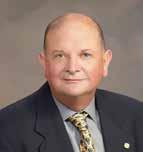
CSPG BOARD

PRESIDENT
Greg Lynch • Shell Canada Ltd. president@cspg.org Tel: 403.384.7704

PRESIDENT ELECT
Mark Cooper • Sherwood Geoconsulting Ltd. presidentelect@cspg.org

PAST PRESIDENT
Tony Cadrin pastpresident@cspg.org

FINANCE DIRECTOR
Scott Leroux • Long Run Exploration directorfinance@cspg.org Tel: 403.766.5862

FINANCE DIRECTOR ELECT
Shelley Leggitt • NAL Resources Ltd. directorfinanceelect@cspg.org

DIRECTOR
Mark Caplan conferences@cspg.org

DIRECTOR
Jen Russel-Houston • Osum Oil Sands Corp. Jrussel-houston@osumcorp.com Tel: 403.270.4768

DIRECTOR
Eric Street • Jupiter Resources estreet@jupiterresources.com Tel: 587.747.2631

DIRECTOR
John Cody • Statoil Canada Ltd. industryrelations@cspg.org

DIRECTOR
Ryan Lemiski ypg@cspg.org

EXECUTIVE DIRECTOR
Lis Bjeld • CSPG lis.bjeld@cspg.org Tel: 403.513.1235
MESSAGE FROM THE BOARD
By Mark Cooper, President Elect
Well, it’s that time of year again when the CSPG formulates the budget for the next financial year which starts at the end of August. As you are all aware the downturn in the industry has had an impact on finances for the CSPG and many of our members. So as I write this article the budget is prepared and awaiting the approval of the Board so that it can be implemented. The challenge for the CSPG over the next 12 months will be how to balance maintaining the services that we provide to the membership whilst stewarding to a reduced budget. We want to see core member services maintained, which include the various Technical Divisions, the Technical Luncheons, specialized conferences and workshops (e.g. the upcoming Gussow), SIFT, Professional Development opportunities through training courses, the Reservoir and the Bulletin, the Long Time Members Reception and the various sporting and social events that occur throughout the year. We think that we can achieve this goal but we may have to get creative in how we manage our costs. We are already taking steps to reduce our monthly cost overheads as much as possible which will help us not just for the next financial year but for a number of years into the future. We will however over the next few months be reviewing all of our activities to see if they are still “fit for purpose” in the changing environment that we now operate in. This will also provide an opportunity to see what efficiencies might be achievable without compromising the quality of activities that are still valued by the membership.
Another challenge for the society over the next couple of years is to reinvigorate the scientific impact of our publications and our conferences and workshops. For example, the Bulletin is currently ranked at 155 out of 235 journals by Scimago Journal Ranking. Part of the reason for this is that the number of paper submissions that have been accepted after peer review has been insufficient to grow the impact of the journal. The editors of the Bulletin have been trying to increase the number of submissions but really the solution is in the hands of us, the membership. Why do
we submit papers to other journals instead of the Bulletin? In the interest of full disclosure I am also guilty as charged! The problem is that if the impact of a journal is not high then authors will select a journal that they believe has a higher impact factor. This is a particular driver for academics who need to publish regularly to achieve career advancement. The danger is that we can end up in a downward spiral of low impact ratings leading to fewer submissions which in turn further drive down the impact factor. The standard of original geological research in Canadian academia and by geoscientists working in industry is excellent but not enough of that work is being published in the Bulletin. There are many young professionals in Calgary who have done MSc and PhD research that has not been published and would provide a steady supply of high quality articles for the bulletin.
Many of the same discussion points are equally applicable to the conferences and workshops that the society organizes or participates in. So here is my challenge to you the members and especially to the younger professionals; think hard about what technical contribution you can make to the Bulletin or at GeoConvention, a CSPG conference or a CSPG division lunch talk. I undertake to give at least one presentation and to try to get at least one manuscript submitted to the Bulletin during 2017.
Finally, I would like to thank on behalf of CSPG the organizing committee of the recent AAPG ACE in Calgary which featured many CSPG members for their efforts in putting together an excellent convention. There were a number of CSPG events during the convention and all were well attended and well received. These events rely heavily on the efforts of the CSPG office staff who behind the scenes made sure that everything ran smoothly and on time. This created a significant additional workload for all of the staff and as usual they rose to challenge so I would also like to thank them on behalf of the membership for their hard work on ACE.
RESERVOIR ISSUE 08 • SEPTEMBER 2016 5
MESSAGE FROM THE BOARD
Revisiting fluvial meander-belt deposits with implications for interpretations of the McMurray Formation
SPEAKER
Paul Durkin
11:30 am
Wednesday, September 14th, 2016
Marriott Hotel, Kensington Ballroom Calgary, Alberta
Please note: The cut-off date for ticket sales is 1:00 pm, four business days before event [Thursday, September 08, 2016].
CSPG Member Ticket Price: $39.50 + GST. Non-Member Ticket Price: $47.50 + GST.
Each CSPG Technical Luncheon is 1 APEGA PDH credit. Tickets may be purchased online at www.cspg.org
ABSTRACT
Over the last decade, a series of insightful studies have highlighted fluvial meanderbelt features in strata of the Cretaceous McMurray Formation. High-quality 3-D seismic and image-log data reveal immense point bars, while detrital zircon studies have linked these features to a continental scale drainage system. These observations have prompted further investigation
into meander-belt deposits, aimed at better understanding complex facies distributions, stratigraphic architecture and paleoenvironmental interpretations of bitumen-bearing units. This study utilizes reservoir analogues from the modern Lower Mississippi River, and a Horseshoe Canyon Formation outcrop at the Hoodoos Recreation Area to inform characterization of the McMurray Formation at Surmont, Alberta.
A series of previously understated features of fluvial meander belts are considered in all datasets, including intra-point bar erosion surfaces, mid-channel bars, deposits associated with protracted abandonment processes, and downstream bar translation including counter-point bar development. Anchored in 3-D seismic data, the paleochannel evolution of a McMurray Formation meander belt is characterized and quantified (e.g., metrics for bar preservation and trajectory). This analysis also considers evidence for the tidal backwater zone, including changes in meander-belt width/thickness ratio and channel sinuosity.
Through the re-evaluation of fluvial meander-belt models, the stratigraphic expressions of geomorphic elements that have been previously understated in rock record interpretations are deduced. The research provides revised perspectives of stratigraphic and paleoenvironmental interpretations for the McMurray Formation, which are used to account for complex facies distributions and internal stratigraphic architecture patterns in oil sands reservoirs.
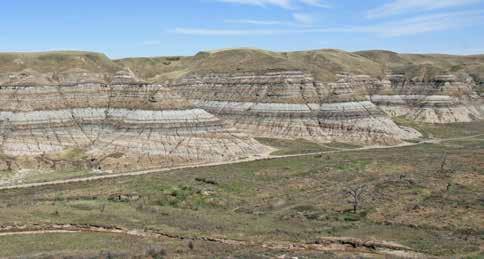

BIOGRAPHY
Dr. Paul Durkin completed his B.Sc. at McMaster University, before moving to the University of Calgary to undertake a Ph.D. with Dr. Stephen Hubbard. His thesis focused on fluvial meander-belt processes, including point bar evolution, sedimentology and stratigraphic architecture, as well as geocellular modelling. Paul has lead many field trips to his Ph.D. field sites in southern Alberta for industry and academic groups, and is currently a post-doctoral researcher at the University of Calgary.

6 RESERVOIR ISSUE 08 • SEPTEMBER 2016
Dr Paul Durkin
TECHNICAL LUNCHEON
A subsurface sedimentological analysis of tidedominated deposits in the bluesky formation (Early cretaceous), Peace River Area, West-central Alberta
SPEAKER
Duncan MacKay, Serinus Energy

11:30am
Tuesday, October 25, 2016
Marriot Hotel, Kensington Ballroom Calgary, Alberta
Please note: The cut-off date for ticket sales is 1:00 pm, four business days before event [Wednesday, October 19, 2016].
CSPG Member Ticket Price: $39.50 + GST. Non-Member Ticket Price: $47.50 + GST.
Each CSPG Technical Luncheon is 1 APEGA PDH credit. Tickets may be purchased online at www.cspg.org
ABSTRACT
Environmental reconstructions of ancient tidal deposits commonly have large numbers of subtly different facies because of the complexity of tidal successions. Industry workers of tidally influenced and tide-dominated deposits are familiar with the necessity for relatively large and complex facies schemes in order to adequately interpret depositional
processes and environments (e.g., many of the Early Cretaceous heavy oil deposits in Alberta are commonly described with more than 15 facies). However, the criteria used to define the facies and their corresponding subenvironments are commonly inconsistent and lack universal applicability. Defining a standard facies scheme and interpreting depositional processes and detailed depositional environments from facies in tidal successions is particularly challenging for three reasons: (1) the successions consist of complexly interbedded sandstone and mudstone layers at a wide range of scales, which makes the delineation of simple facies very difficult; (2) spatial and temporal variations in the interplay of tidal, wave and fluvial energy are typically not unique to particular (sub-)environments; and (3) the morphology of tide-dominated environments is complicated, which makes it difficult to link facies and facies successions with the morphological elements and locations within the system.
In the Peace River area, of west-central Alberta, the tidally dominated Bluesky Formation (Cretaceous) is a pervasively heterolithic deposit that provides an ideal core-based case study for examining problems of tidal lithofacies classification and environmental interpretation. Using well logs and core, the Bluesky Formation is divided into two valley-bounded sequences, informally referred to in this study as the “lower Bluesky unit” and the “upper Bluesky unit”. The lower Bluesky unit is composed of tide-dominated deltaic deposits. The upper Bluesky unit is composed of tidedominated estuarine deposits. The lower Bluesky unit has abundant fluid-mud layers (comprising 5-40% of most facies), many of which are interpreted to have been deposited under conditions of moderate to high suspended-sediment concentration (1-1000 g L-1) and appreciable current speeds (> 0.2 ms-1). The upper Bluesky unit, by contrast, has more sparsely distributed mudstone layers (comprising 0-15% of most facies) deposited primarily during slackwater and under conditions of relatively low suspended-sediment concentrations (< 1 g L-1). Both units are composed predominantly of subtidal and lower intertidal channel-bar and tidalflat deposits. However, the most seaward deposits of the deltaic lower Bluesky unit
contain sandstone-dominated heterolithic delta-front and mouth-bar deposits, whereas the most seaward environments of the estuarine upper Bluesky unit contain monolithic tidal sand-ridge deposits.
A new and robust method for interpreting tidal facies is presented in this study. The approach uses a broadly applicable processdriven facies classification scheme that ensures a manageable number of facies. Recent improvements in the understanding of tidal systems and their facies models are incorporated into the method, most significantly highlighting the importance of mud, as well as the realization that the set of geomorphic elements that comprise tidal systems is relatively small despite their complex lithofacies.
BIOGRAPHY
Dr. Duncan Mackay completed his B.Sc. at the University of Waterloo and, after working several years full-time in the oil and gas industry, returned to academia at Queen’s University. Duncan completed a Ph.D. under the supervision of Dr. Robert Dalrymple, studying the sedimentology of tidal depositional systems. Duncan has worked in oil and gas industry for Shell Canada, Verano Energy (a Colombianfocused E&P company) and currently is working at Serinus Energy pursuing exploration opportunities in Eastern Europe and North Africa.
RESERVOIR ISSUE 08 • SEPTEMBER 2016 7 TECHNICAL LUNCHEON
Dr. Duncan MacKay
BASS DIVISION
Structural Evolution of the Firebag Basin and Stratigraphic Architecture of its Cretaceous Fill, Athabasca Oil Sands Region, Alberta, Canada.
SPEAKER
Andres Altosaar (Suncor Energy Inc.)
Time: 12:00 pm
Wednesday, September 7th, 2016 ConocoPhillips Auditorium, Gulf Canada Square, 401 - 9th Ave. S.W. Calgary, AB
ABSTRACT
Located 60 km northeast of the city of Fort McMurray, Alberta, Canada, the Firebag Basin is host to bitumen saturated siliciclastics of the Aptian McMurray Formation. These deposits form a portion of Suncor Energy’s resource at the Firebag Steam-Assisted Gravity Drainage (SAGD) Project.
Although rooted in Precambrian basement rocks, the Firebag Basin is most prominently expressed at the subCretaceous unconformity (SCU). Negative relief on this surface is upwards of 50m, and defines a nearly equidimensional rhombic basin with sharp margins. The overall surface area of the basin is upwards of 45 km2, and its shape is reflected in all underlying geologic surfaces.
Regional potential field data sets highlight a major 100 km long, NNW-SSE linear discontinuity transecting the Firebag SAGD Project that is interpreted to be a fault at the level of the Precambrian basement. Higher resolution aeromagnetic data coupled with 3D seismic suggest the fault is strike-slip in nature, locally segmented and contains both paired bend and bypass structures. The structural history of the Firebag Basin
is subdivided into four distinct phases: 1Paleoproterozoic (Taltson-Thelon orogeny), 2- Early-Middle Devonian (Antler orogeny and extension associated with uplift of the Peace River-Athabasca Arch), 3- Middle Jurassic to Early Cretaceous (Columbian orogeny), 4- Early Cretaceous (Columbianearly Laramide orogenies).
Paleozoic compressional events are interpreted to have preferentially activated this regional strike-slip fault in a dextral sense, promoting both extensional and contractional regimes within the study area. The Firebag Basin formed in the extensional zone developed around the northern releasing bend. The corresponding contractional zone formed around the southern restraining bend is defined by basement uplift and erosion. Mesozoic basement fault activation is interpreted to have significantly accelerated and focused the episodic dissolution of Middle Devonian evaporite.
The Firebag Basin is described here as a composite pull-apart/karst basin that owes its origin to sub-regionally unique extensional responses to regional compressional tectonics, and non-unique multi-phase evaporite dissolution-collapse. The second half of the study focuses on the stratigraphic architecture of the basin fill, and highlights a unique piece of sand-rich McMurray Formation stratigraphy (supra-lower McMurray, submiddle McMurray) that forms the primary reservoir at the Firebag SAGD Project.
The creation and detailed application of a sedimentologic facies scheme to the McMurray Formation has led to a fourfold subdivision of its stratigraphy, and demonstrates a strong relationship to the structural history of the Firebag composite pull-apart/karst basin. The Aptian McMurray Formation unconformably overlies Devonian strata and consists of four distinct units that highlight the episodic nature of early McMurray Formation depositional systems and how they form in response to the structural history of the basin and higher-order, regional geologic controls. In ascending order, they are lower McMurray (lM), a currently unassigned fluvial McMurray unit, middle McMurray
(mM), and upper McMurray (uM).
The fluvial McMurray unit (fM) is the primary reservoir unit for the Firebag SAGD project, producing predominantly from the Firebag Basin. It is also a unique piece of McMurray stratigraphy in the sense that it is well-developed (50+ m thick and high net-to-gross) within the basin, and is poorly-developed to absent on the outside. It is positioned unconformably between the industry standard lower and middle McMurray units. From a regional perspective, the fM unit appears to be confined to karstderived basins in the easternmost areas of the Athabasca oil sands region.
Within the Firebag Basin, collapsed sands, carbonaceous mudstones, and coals of the lower McMurray are unconformably overlain by in-situ stacked, m-scale, fM cut-and-fill sands. In turn, the fM succession is sharply and erosionally overlain by thick and laterally extensive point bar deposits of the tidallyinfluenced mM. Outside of the basin, mM inclined heterolithic strata unconformably overlie Devonian carbonates, lM, or thin and discontinuous fM deposits.
Basic sedimentological and stratigraphic observations highlight the fM/mM boundary as one that reflects a change from locally sourced sediment deposited over rugged karst topography, to regionally sourced sediment deposited by a northflowing, continental-scale drainage system.
BIOGRAPHY
Andres Altosaar is a senior geologist who specializes in structural controls on stratigraphic successions. He has worked with Suncor Energy for over 10 years, the last 5 of which were on the Firebag SAGD Project.
INFORMATION
BASS Division talks are free. Please bring your lunch. For further information about the Division, to join our mailing list, receive a list of upcoming talks, or if you wish to present a talk or lead a field trip, please contact either Steve Donaldson at 403-8088641, or Mark Caplan at 403-975-7701, or visit our web page on the CSPG website at http://www.cspg.org.
8 RESERVOIR ISSUE 08 • SEPTEMBER 2016 DIVISION TALKS


RESERVOIR ISSUE 08 • SEPTEMBER 2016 9 PHOTO OF THE MONTH
Tripoli, Libya. Dessication cracks with mud-flake structures. These modern sediments lie in a small, un-named wadi east of Gharyan in the Jebel Nafusa mountains. Photo by Ryan Simpson.
STRUCTURAL DIVISION
Fold-Thrust Interactions in the Canadian Rocky Mountains Revisited: New Kinematic Models and Their Implications for Other Shallow Fold-Thrust Belts
SPEAKERS
Jürgen Kraus & Paul F. Williams
Time: 12:00 pm
September 7th, 2016
Location: Schlumberger, Second Floor of the Palliser One Building, 125 9th Ave. Calgary T2G 0P6
ABSTRACT
We review the history of structural interpretation techniques used in the Rocky Mountains Foothills and Front Ranges for the last half century, from quantitative cross section construction through ramp-flats folds (detachment fold, fault-propagation fold, fault-bend fold) and submit a broader view of fold-thrust interactions. Folds have been traditionally considered as the product of
thrusting and no footwall syncline exists in any current geometrical or kinematic rampflat fold model.
We show a discrepancy between observation and interpretation by examining prominent structures in the Foothills and Front Ranges. All our examples of fold-thrust scenarios have footwall synclines, substantially thickened fold hinges even in Devonian carbonates, and, where exposed, other evidence of layerparallel shortening such as cleavage and parasitic folds.
It appears that the current models are not exhaustive in describing most observed fold-thrust scenarios and that the faultpropagation-fold model is overused in subsurface interpretations. The latter, while possible, is probably an artifact of seismic imaging, biased processing, and modeldriven interpretation in many cases. Footwall synclines appear to be the norm rather than the exception in outcrop.
We show that large folds generally form by one of two mechanisms, one that does not involve thrusting and a second that does. The latter is a variety of detachment fold. Although they develop along different strain paths, they may be geometrically indistinguishable.
We then integrate these folds in a progressive
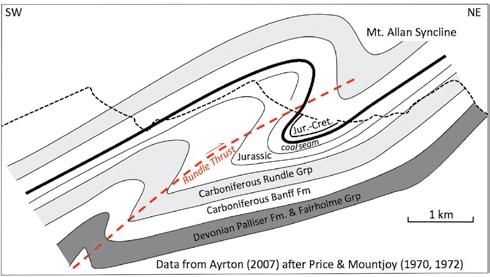
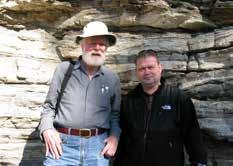
deformation and view them as earlier stages in the development of a fault-bend fold. During progressive deformation, the hanging wall anticlines evolve and "travel" with the hanging wall, whereas the footwall synclines are left behind.
Extending the interpretation of the rampflat folds from end members to stages, and relating these interpretations to the hanging wall only, eliminates the need for the outdated term “break-thrust fold” and explains all structures found in the Rockies and any other shallow fold-and-thrust belt. Classic fault-propagation folds are possibly rare in nature.
It is concluded that the Rocky Mountains Foothills and Front Ranges experienced a higher degree of penetrative, ductile deformation than previously believed.
BIOGRAPHIES
Jürgen Kraus is a structural geologist and international exploration geologist with his own consulting company, Franconia Geoscience Ltd. He is also a director of the Canadian Global Exploration Forum and co-chair of CSPG’s International Division. Jürgen held his first petroleum-related position in 1987. He received an M.Sc in Structural Geology and Geophysics from Göttingen University in 1991 and a Ph.D. in Structural Geology from the University of New Brunswick in 1998.
After assignments with the Geological Survey of Canada, Aachen Technical University, and the Saskatchewan Geological Survey, he joined Shell Canada
10 RESERVOIR ISSUE 08 • SEPTEMBER 2016 DIVISION TALKS
Paul Williams & Jürgen Kraus
Figure 1: Attempted reconstruction of an anticline/syncline pair prior to being overprinted by the Rundle thrust. Dashed black line represents current erosional surface.
in 2001 and created drillable prospects in the Foothills at Waterton and Pincher Creek. Jürgen established his consultancy in 2003 and has worked on international oil and gas projects for various companies since.
Apart from the Foothills, Jürgen’s experience in fold-and-thrust belts goes back to the 1980s (Rhenish massif as the central European extension of the Appalachians), his M.Sc. mapping in the Moine Thrust Belt in the Scottish Caledonides, and the Longmenshan in Sichuan Province of China.
Paul F. Williams, Professor Emeritus at the University of New Brunswick, is an internationally acclaimed structural geologist who has influenced his subject
tremendously for 45 years. He has published over 80 peer-reviewed scientific papers, and 'An Outline of Structural Geology', co-authored by Paul, is regarded as one of the most influential structural geology textbooks of the 20th century. He mentored over 50 graduate students and post-doctoral fellows.
In 1980, Paul established the Canadian Tectonics Group, which will hold their 36th annual workshop in Muskoka in October. The Journal of Structural Geology has dedicated two special volumes to Paul's lifetime achievements, one in recognition of his contributions as a scientist, the other for his contributions as a mentor.
In 2013, Paul won the inaugural Henk Zwart Medal in structural geology for
his outstanding contribution to the advancement of science in the field of rock deformation.
REFERENCES
Ayrton, W.G., 2007, The Mountains, the rocks, the oil and gas, second edition: http://www.cspg.org/cspg/documents/ Publications/CSPG_poster.pdf
Price, R.A. and Mountjoy, E.W., 1970, Geology, Canmore (West Half): Geological Survey of Canada, Map 1266A, 1:50,000 scale (map and cross- sections).
Price, R.A. and Mountjoy, E.W., 1972, Geology, Banff (East Half): Geological Survey of Canada, Map 1294A, 1:50,000 scale (map and cross-sections).

RESERVOIR ISSUE 08 • SEPTEMBER 2016 11
DIVISION TALKS 28th Annual CSPG/CSEG10km/5km Road Race and Fun Run Wednesday, September 21, 2016 Registration OPEN! To register please go to www.cspg.org/RoadRace Member rate: $40+gst | Non-member rate: $50+gst | Student & In-Transition rate: $25+gst
PALAEONTOLOGY DIVISION
Exciting New Discoveries by the Southern Alberta Dinosaur Project
SPEAKER
Wendy Sloboda, Southern Alberta Dinosaur Project
Time: 7:30 pm
Date: Friday, September 16, 2016
Location: Mount Royal University, Room B108
ABSTRACT
The Southern Alberta Dinosaur Project (SADP) is a long-term fieldwork project that focuses on the Milk River region of southern Alberta, near the Montana border, and is part of a multi-year collaborative field research project organized and initiated with Dr. Michael Ryan from the Cleveland Museum of Natural History, as well as collaborators from the Royal Tyrrell Museum. This area contains some of the oldest dinosaur-bearing sediments in Alberta, and has potential to reveal new dinosaur species and to contribute to our knowledge of a poorly known time in Late Cretaceous dinosaur evolution.
The Southern Alberta Dinosaur Project (SADP) aims to execute a complete paleontological survey of this area, with the goals of compiling a detailed biostratigraphic framework for this region that can be compared directly to the datum now in place for the Dinosaur Provincial Park locality and to document the poorly known dinosaur
fauna of the lower half of the Belly River Group and the Milk River Formation.
Since 2004, when the project started, the decade-long project has been particularly successful. It has resulted in the collection of over 3000 new fossil specimens, and the discovery of numerous new taxa. To date, one new species of turtle and sixe new species of dinosaur have been formally described, with several more news being worked on currently.
Wendy Sloboda has worked extensively with the Southern Alberta Dinosaur Project and her presentation will highlight some of the exciting new discoveries.
BIOGRAPHY
Wendy Sloboda is a Canadian fossil hunter from Warner, Alberta. She has made fossil discoveries of dinosaurs and other extinct animals on several continents, with finds in Canada, Argentina, Mongolia, France and Greenland.
In 1987, as a teenager, Wendy discovered fossil eggshells in southern Alberta that she passed on to scientists, who uncovered multiple nests of hadrosaurs (duckbilled dinosaurs) including fossilized embryos. She enrolled at the University of Lethbridge in 1989 and in the summer of 1990, discovered a hadrosaur skeleton. She worked for sixteen years as a paleontological technician at the Royal Tyrrell Museum and started her own business, Mesozoic Wrex Repair, a fossil preparation and casting company, in 2001. She earned a B.A. in history from the University of Lethbridge in 2001.
Wendy’s discoveries include the first pterosaur bonebed in North America. She has made numerous discoveries in Alberta's Dinosaur Provincial Park, including fossil skulls of corythosaurus, ankylosaurs (including Euoplocephalus) and crocodilians.
In 2010, Wendy discovered a rock containing a bone fragment in southern Alberta, between the Milk River and the CanadaUS border. Evans and Ryan described the remains as a new genus and species of a horned dinosaur, dubbed Wendiceratops pinhornensis. In celebration of having a genus named after her, Wendy had a drawing of the dinosaur and its scientific name tattooed on her arm.
Paleontologist David Evans, of the Royal Ontario Museum calls Wendy Sloboda "basically a legend in Alberta. She's probably one of the best dinosaur hunters in the world."
INFORMATION
This event is presented jointly by the Alberta Palaeontological Society, the Department of Earth and Environmental Sciences at Mount Royal University, and the Palaeontology Division of the Canadian Society of Petroleum Geologists. For details or to present a talk in the future, please contact CSPG Palaeontology Division Chair Jon Noad at jonnoad@hotmail.com or APS Coordinator Harold Whittaker at 403-2860349 or contact programs1@albertapaleo. org. Visit the APS website for confirmation of event times and upcoming speakers: http://www.albertapaleo.org/
12 RESERVOIR ISSUE 08 • SEPTEMBER 2016 DIVISION TALKS
CORPORATE SPONSORS
SAMARIUM
CSPG Foundation
DIAMOND
Alberta Energy Regulator
TITANIUM
geoLOGIC systems ltd.
AGAT Laboratories
Tourmaline Oil Corp.
PLATINUM
University of Calgary Weatherford Canada Partnership
GOLD
Imperial Oil Resources
Loring Tarcore Labs Ltd.
Progress Energy Ltd.
SILVER
Repsol Oil and Gas Canada Inc.
MEG Energy Corp.
Core Laboratories
Shell Canada Energy
BRONZE
Schlumberger
Belloy Petroleum Consulting
Canada Brokerlink Inc.
Chinook Consulting
CMC Research Institutes, Inc.
CSEG Foundation
Geomodeling Technology Corp.
Husky Energy Inc.
I H S
MJ Systems
Murphy Oil Company Ltd.
Nexen ULC
Seitel Canada Ltd.
Tony Cadrin
Tuya Terra Geo Corp.
DIVISION TALKS
INTERNATIONAL DIVISION

Exploration and Development of Fractured Basement Reservoirs – an Underexplored Conventional Play with Significant Resource Potential.
SPEAKER
Gordon Graham
Time: 12:00 pm
Wednesday September 21, 2016
CNOOC Nexen, Annex Theatre 801-7th Ave SW, Calgary AB
ABSTRACT
There is well established, stable production from fractured basement reservoirs in many basins. Using specific examples of successful developments in Vietnam, Yemen and the USA, the talk will describe how the fields were discovered and appraised and how the lessons learned can be applied to other areas.
Basement reservoirs are unusual but they are not unconventional, favorably located
wells are capable of flow without further treatment. The fields discussed all produce from fractures; there is a weathered zone in each of the fields however it is not porous. The best reservoir is in the upper part of the basement and reservoir quality decreases with depth relative to the top of the basement. Fractures are generally connected and the reservoir acts as a tank. Pressure support by water injection is effective as the water sinks and fills the poor reservoir allowing shallower wells to drain the entire field. This results in high recovery factors. Gas injection would be ineffective as the gas would fill the best reservoir. Hydrocarbon charge is from source rocks directly overlying and flanking the basement. Fracturing must be contemporaneous with oil generation and migration in order to preserve the fracture porosity and permeability.
Basement reservoirs can be systematically explored for and developed yet the play is generally viewed skeptically by the industry meaning that there is significant remaining resource potential.
BIOGRAPHY
Gordon Graham is a geologist with 38 years of professional experience, primarily in exploration. He worked for Amoco in Canada and Morocco, for Canadian Oxy in Canada, Yemen, Vietnam and Indonesia, and for SOCO International in Vietnam, Yemen, the Republic of the Congo, and the Democratic Republic of the Congo. He presently works as a consultant with primary focus on basement reservoirs. Gordon holds a B.Sc. in Applied Geology from the University of Strathclyde and an M.Sc. in Geology from the University of Calgary.
ROCK SHOT
Frontier Exploration in the Caves of the Canadian Rockies
SPEAKER
Gavin Elsley, Explorationist, Niko Resources
As of July 26, 2016
RESERVOIR ISSUE 08 • SEPTEMBER 2016 13
Gordon Graham
Carbon Capture Storage & Utilization Workshop


ConocoPhillips Auditorium, Calgary Alberta | September 29th
Conveners: Kirk Osadetz | CMC Research Institutes Inc. & Luc Rock | Shell Canada Ltd

Time
8:00 - 8:05
8:05 - 8:25
8:25 - 8:45
8:45 - 9:05
9:05 - 9:25
9:25 - 9:45
9:45 - 10:05
10:05 - 10:35
10:35 - 10:45
10:45 - 11:05
11:05 - 11:25
11:25 - 11:45
11:45 - 12:05
12:05 - 12:35
12:35 - 13:15
13:15 - 13:35
13:35 - 13:55
13:55 - 14:15
14:15 - 14:35
14:35 - 14:55
14:55 - 15:25
15:25 - 15:35
15:35 - 15:45
15:45 - 15:55
15:55 - 16:05
16:05 - 16:15
16:15 - 16:45
16:45 - 16:50
Theme
Introductory Talk Capture
Storage & Monitoring
Author
Welcoming Remarks
Industrial carbon management is a new business opportunity for Energy geoscientists and engineers that results from the need for a global energy system transformation. Canada is a global front -runner in many aspects of Carbon Capture, Storage and Utilization (CCSU). This meeting will provide an introduction to CCSU activities, success and challenges with a Canadian emphasis.
Member Rate: $200
Title
Neil Wildgust Global Perspective on CCUS - achievements, opportunities, challenges
Naoko Ellis*, Goran Vlajnic Next generation capture technologies
Farhang Abdollahi Amine based carbon capture technology
Jonathan Carley
Enzyme-enabled carbon capture technology
Stephen Tessarolo Shell Quest - case study
TBC
Boundary Dam - case study
Ian Craig + Session Speakers Panel Discussion: Methods, Costs and Opportunities: A focus on Western Canada
BREAK
Don Lawton
TBC
Simon O’Brien
Storage & Monitoring - review
Aquistore - case study
Shell Quest - Case Study
Barry Freifeld CO2 geophysical monitoring at Otway, Australia
Rick Chalaturnyk, Bernhard Mayer + Session Speakers
LUNCH
TBC
Utilization
Learnings, Barriers & Opportunity - Panel
Panel Discussion: Methods, Costs and Opportunities with a focus on Western Canada; deep / shallow monitoring
Non - enhanced petroleum recovery opportunities - review
Kirk Osadetz Enhanced petroleum recovery opportunities - review
Barry Freifeld Cranfield Thermosiphon - case study
Murray Reynolds Value Added Usage of Anthropogenic Carbon Dioxide in Oilfield Operations
David Hills
Enhance-ACTL-NW upgrader project
Session Speakers Panel Discussion
COFFEE BREAK
Steve Larter Overview
TBC Economics
Tim Wiwchar
Shell Quest
Jeff Walker ISO/TC 265: Carbon Dioxide Capture, Transportation & Geological Storage
Session Speakers Panel Discussion
CLOSING REMARKS
14 RESERVOIR ISSUE 08 • SEPTEMBER 2016
Non-Member
Rate: $250

Geothermal Energy Workshop

ConocoPhillips Auditorium, Calgary Alberta | September 30th
Conveners: Stephen Grasby | Geological Survey of Canada & Jasmin Raymond | INRS

Canada has enormous geothermal energy potential, but to date this clean and renewable energy resource has not been exploited. This meeting will examine current geothermal research across the country and highlight some of the geoscience needed to enable successful development.
Author Title
8:30 - 9:00 REGISTRATION & COFFEE
9:00 - 9:10
9:10 - 9:30
9:30 - 9:50
9:50 - 10:10
Welcome & Introductions
Stephen Grasby
Jasmin Raymond, Michel Malo, Denis Tanguay, & Stephen Grasby
Carlos Salas
10:10 - 10:30 COFFEE BREAK
10:30 - 10:50
10:50 - 11:10
11:10 - 11:30
11:30 - 11:50
Catherine Hickson
Kevin Palmer-Wilson, Warren Walsh, & Jonathan Banks
Grant Ferguson & David Phillips
Jonathan Banks
12:00 - 13:00 LUNCH
13:00 - 13:20
13:20 - 13:50
13:50 - 14:10
14:10 - 14:30
Marytn Unsworth
Michel Malo, Jasmin Raymond, Karine Bédard, Félix -Antoine Comeau, Maher Nasr, Vasile Minea, Marc-André Richard.
Hejuan Liu, Bernard Giroux, Lyal B. Harris, Steve M. Quenette, John Mansour, Karine Bédard
Jeff Witter and John Ebell
14:30 - 15:00 COFFEE BREAK
15:00 - 16:30 PANEL DISCUSSION
Member Rate: $200 Non-Member Rate: $250 Joint Geothermal
Geothermal energy potential of Canada
Current status of direct utilization of geothermal energy in Canada
Knowledge-gap infilling BC’s geothermal potential: one step at a time
Direct use geothermal resources in British Columbia
A favourability assessment of geothermal energy potential in northeastern BC, Canada
Importance of Reservoir Properties in Assessing the Geothermal Potential of the Western Canada Sedimentary Basin
Can Supercritical CO2 be used as a geothermal energy transport medium in Alberta's crystalline basement?
SPONSORED BY: TUYA TERRA GEO CORP.
An introduction to geothermal exploration using electromagnetic methods, with application to Western Canada
St. Lawrence Lowlands geothermal resources
Numerical analysis of temperature at depth affected by heat generation in basement rocks of the St. Lawrence Lowlands, Quebec
Geothermal Exploration in the Tintina Fault Zone near Ross River, Yukon

Bow River Corridor, Canmore, Banff, Lake Louise| October 1st
Member Rate: $100 Non-Member Rate: $150

RESERVOIR ISSUE 08 • SEPTEMBER 2016 15
Time
& CCUS Field Trip
CHARLES RICHARD STELCK O.C., PH.D., F.R.S.C., P. GEOL.
May 20, 1917 – May 14, 2016
On May 14th 2016, Alberta lost one of its legends – Dr. Charles Richard Stelck, geologist, prospector, oil finder, explorer and most importantly, a teacher and mentor to thousands of students. It was in his role as an educator that Charlie attained his greatest satisfaction.
Charles Richard Stelck of the University of Alberta was a renowned Canadian paleontologist and stratigrapher, who served Alberta and the petroleum industry with distinction throughout his unparalleled professional career. Charlie is well known for his pioneering work on unraveling the stratigraphy of the Western Canadian Sedimentary Basin, his inspired application of biostratigraphy as an exploration tool, and his dedication and passion for the teaching of geology.
Charles Stelck was born in Edmonton, Alberta on May 20, 1917; the son of Robert Ferdinand Stelck and Florella Maud Mary (Stanbury). In 1934, he entered the University of Alberta, taking courses with the goal of pursuing a degree in education. Every day, Charlie would walk to the university with his two high school friends, W.G. Morrow and Bob Folinsbee, who were pursuing law degrees Morrow and Folinsbee's programs required that they take a course in science, and so they enrolled in an introductory geology course taught by the legendary Dr. Percival S. Warren. Morrow and Folinsbee spoke with great enthusiasm to Stelck regarding their course with Warren. The inspiration that Warren imbued in his students resulted in both Folinsbee and Stelck registering in Geology the following year. In 1935, there were three teachers in the department of geology: Dr. P.S. "Softrock" Warren, Dr. J.A. "Hardrock" Allan, and Dr. R.L. Rutherford. Charlie credited these men with not only giving him an education, but also a life. If Stelck had stood on the shoulders of giants, he had the best to stand upon, not only at the University of Alberta, but during his first job as a field assistant in 1937, when he worked with Dr. Frank H. McLearn
collecting fossils along the upper Peace River. McLearn was the foremost expert on invertebrate paleontology at this time, and he provided Charlie with his first practical experience in field work and in fossil identification.
It is remarkable that Charlie spent almost all of his academic life at the University of Alberta, beginning with his enrollment as a student in 1934. He obtained a BSc degree in 1937 and a MSc. degree in 1941. Between 1941 and 1946, most of Charlie’s summers were spent identifying fossils with his mentor Dr. P.S. Warren. In 1946, Charlie started his PhD at Stanford University. He returned to the University of Alberta as a Lecturer in 1948, and once he obtained his PhD in 1951, was promoted to Assistant Professor. Charlie retired in 1982 and was awarded the rank of Emeritus Professor. He continued to pursue mentoring of graduate students and engaging in research until his death in 2016, amounting to over 80 years of service! The University of Alberta was blessed to have him and so were the myriad of students he taught and inspired. As a testament to his stature in the geological community, the University of Alberta instituted an endowed chair – the Charles Stelck Chair in Petroleum Geology. The chair was fully funded in 2015.
Charlie Stelck represented a near ideal fusion of teacher, researcher, and Professional Geologist, and for the past 50 years he has stood as the perfect role model for the generations of students who had the honour of being taught by him. Dr. Stelck possessed all of the attributes of an outstanding teacher. He was well spoken and animated, knowledgeable and well prepared, and patient and understanding. He represented a true mentor to the many undergraduate and graduate students who benefited from his attention. He encouraged high standards of performance from his students, but his door was always open and he was always available for advice. Charlie Stelck was noted for his humanity, integrity, enthusiasm, and accessibility. His students know him as a dynamic and
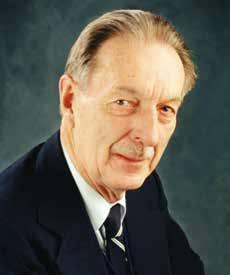
colourful lecturer and a compassionate counselor. The 44 M.Sc. and nine Ph.D. students Charlie supervised, are a Who's Who of the petroleum industry.
Dr. Stelck also displayed all of the outstanding attributes of a research scientist. He was careful and critical in his observations, accurate and meticulous in his descriptions, and perceptive in his interpretations. Along with his greatly respected mentor, P.S. Warren, he was the first to bring stratigraphic order to the Devonian System in western Canada. He introduced the systematic study of sequential benthic foraminiferal faunas in the Cretaceous and demonstrated their value not only in biostratigraphy but also in palaeoecology. Charlie introduced palynology to western Canada and saw it develop into one of the most successful and widely used branches of paleontology for elucidating stratigraphic relationships among Cretaceous rocks of non-marine origin. These studies provided numerous oil companies with a sound biostratigraphic basis for their exploration programs and established the geological settings of some of the most important oil fields in Alberta. Charlie’s talents and enthusiasm are exemplified in his 111 papers. After his "retirement" in 1982, he remained an active researcher, publishing some two
16 RESERVOIR ISSUE 08 • SEPTEMBER 2016 ARTICLE
dozen papers while trying to make a dent in the two million fossils that he collected and stored in University warehouses. His last paper was published just before he celebrated his 98th birthday!
Charlie’s personal success as an oil and gas discoverer bears witness to his broadly based approach to the prospecting for fossil fuels. From his pioneering field work on the wartime Canol Project in the Norman Wells and Upper Peel River areas of the North West Territories to his discovery of the Fort St. John gas field and the Monkman Pass gas field, Dr. Stelck demonstrated the value of a thorough investigation of stratigraphic facies, paleogeography and biostratigraphy in hydrocarbon exploration and exploitation. As a consulting professional geologist. Dr. Stelck has been registered with APEGGA (APEGA) since 1942 and has been one of its most ardent supporters. In fact, for many years, he was the chief steward of the Earth Science Ring Group and was the author of their moving initiation ritual.
Charlie was also a staunch supporter of the Canadian Society of Petroleum Geologists, of which he was a member since 1944! His 78-year tenure as a member may never be surpassed. He was held in the highest esteem by the Society, and was recipient of the R.J.W. Douglas Medal (1994) and the Stanley Slipper Gold Medal (2001); the only individual to win both of these highly prestigious medals. Charlie became the society’s first Honorary Member in 1978.
Charlie provided his time and invaluable advice and expertise willingly, even joyfully, to numerous graduate students and junior professors on a regular basis and served on
numerous MSc. and Ph.D. thesis research committees. Students of sedimentology and stratigraphy eagerly sought his advice and involvement in biostratigraphic zonations, while ascertaining the sequence stratigraphic framework of their study area. Charlie was reputed for having the sharpest eyes of any man in the world for an ammonite, although he frequently lamented that the microscope had taken his vision. He achieved legendary status at the University for not only being able to identify any fossil that you brought him, but the likelihood that he could also tell you from which outcrop it was collected!
The stature of his past work was recognised by his election to the Royal Society of Canada in 1960, his election as an Honourary Member of the Canadian Society of Petroleum Geologists in 1979, his receiving the Centennial Award of the Association of Professional Engineers, Geologists and Geophysicists of Alberta in 1980, the Logan Medal of Geological Association of Canada (the GAC’s highest distinction) in 1982, a Rutherford Award for Excellence in Undergraduate Teaching by the University of Alberta in 1982, the Robert J. Douglas Medal (1994), and the Stanley Slipper Medal (2001) from the Canadian Society of Petroleum Geologists in 1995 and 2001, and the Grover Murray Distinguished Educator Award from the American Association of Petroleum Geologists (2001). In 1997, he was awarded the highest civilian award for service to our country by being named an Officer of the Order of Canada. The University of Alberta further honoured Charlie in 2003 by awarding him an Honorary Doctor of Science Degree. Charlie was inducted into the Canadian Petroleum Hall of
Fame in 2005. In 2008, the Astronomer Andrew Lowe named the Asteroid 187680- Stelck. Other honours followed, including the Alberta Centennial Medal in 2005, Engineers of Canada Fellowship in 2005, the Queen’s Diamond Jubilee Medal in 2012, and his naming as a Fellow Geoscientists Canada in 2013.
Dr. Stelck's successful career was complemented by an equally successful family life. He was married in 1946 to Frances Gertrude (Macdowell), and had four sons – David, Brian, Leland and John, nine grandchildren, and 8 greatgrandchildren.
As an inspiring teacher, a pioneering researcher and a dedicated administrator, Charlie Stelck personified the true meaning of what it is to be a Professor. While the scientific community is poorer for his loss, we will benefit always by striving towards the paragon he embodied.
S. George Pemberton
C. R. Stelck Chair in Petroleum Geology
Department of Earth & Atmospheric Sciences, University of Alberta, Edmonton, AB, T6H 3T8
Murray K. Gingras Professor
Department of Earth & Atmospheric Sciences, University of Alberta, Edmonton, AB, T6H 3T8
James A. MacEachern Professor
Department of Earth Sciences
Simon Fraser University, Burnaby, BC, Canada. V5A 1S6.

2016 HONORARY ADDRESS LUNCHEON + CHRISTMAS SOCIAL December 13th, 2016 | TELUS Convention Centre Managing the Earthquakes Risk Associated with Oil and Gas Development and CO2 Sequestration Speaker: Mark D. Zoback Register online today at www.cspg.org RESERVOIR ISSUE 08 • SEPTEMBER 2016 17
ARTICLE
ANCIENT SEAS, ANCIENT LANDS — AN ADVENTURE THROUGH THE CRETACEOUS
Mount Royal University makes plans to grow Earth Sciences exhibits on campus
As you walk throughout Mount Royal University’s campus, you may find a few interesting geological items. Specimens lurking in the hallways or unusually large rocks outside the institution’s East Gate — too strategically placed to be a coincidence — are just examples of the unique exhibits on display at the University.
Mount Royal’s geological sites throughout campus continue to evolve. What began with the Progress Energy Canada Ltd. Rockscape — rock layers arranged in correct geological order demonstrating how rocks record time in Earth’s history — set the stage for Cretaceous Seas.
“There’s no better visual learning than seeing a long-necked Elasmosaurus swimming after a toothy Enchodus right above your head,” says Wayne Haglund, PhD and Cretaceous Seas’ project champion. “We are looking forward to providing the same experience with dinosaurs in action, on foot.”
As Calgary’s largest exhibit of life-sized specimens of extinct marine reptiles and fishes, Cretaceous Seas displays casts constructed from molds produced from bones of marine reptiles that prowled the Western Interior Seaway of North America during the Cretaceous Period. The fossil
casts were made possible by donations from private donors, as well as sponsorship by the Association of Professional Engineers and Geoscientists of Alberta (APEGA).
With the success of the two onsite geological exhibits, the University is planning the next phase in the process — Cretaceous Lands. It will be another outstanding accomplishment for Mount Royal that demonstrates its commitment to experiential learning.
The exhibit will feature a small marsupial mammal, Didelphodon, and the pygmy tyrannosaur, Nanotyrannus lancensis — a dinosaur that researchers hotly debate as to whether this is a juvenile Tyrannosaurus rex or a dwarf cousin. Already generating excitement amongst faculty, staff and students on campus, Cretaceous Lands will pull students and visitors into the Cretaceous world.
Mount Royal Professor Emeritus Wayne Haglund, who is working tirelessly to see the exhibit come to fruition, notes, “The primary objective is to give a learning experience, an educational model. It’s not just about looking at the ‘pretty’ skeletons, they are designed for current and future students who can now physically see the beasts they study and read about in real size.”

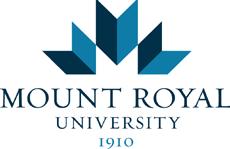
Fundraising is continuing, with the hope of raising $80,000 for its full installment. The inclusion of Cretaceous Lands will enhance the collection of the major vertebrate groups that lurked Cretaceous environments in Western North America.
Housing these geological exhibits not only enhances Mount Royal’s mission to provide an exceptional undergraduate educational experience, but offers in the surrounding community free access to educational tools. Tours to individuals and small groups are offered for those interested in viewing the specimens while hearing some interesting facts and dialogue.
“Cretaceous Lands will maximize students’ knowledge of geological history and education, gaining the knowledge necessary to support and grow their careers,” says Haglund. “Students outside of the geology program, including the community, will also experience an elevated level of education, unearthing the potential geologist in all of us!”
Cretaceous Lands, Cretaceous Seas and the Progress Energy Canada Ltd. Rockscape will combine to nurture and support informed-thinking in the community.
Readers can visit mtroyal.ca/CretaceousSeas to learn more about the current exhibit at Mount Royal University.
18 RESERVOIR ISSUE 08 • SEPTEMBER 2016
ARTICLE
ONTARIO OIL AND GAS PLAYS:
1. Exploration, Production and Geology
By Carter, T.R.1; Clark, J.2; Colquhoun, I.1; Dorland, M.3; and Phillips, A.4
1. Geological consultant, London, ON, 2. Ontario Oil, Gas and Salt Resources Library
3. Geological consultant, Woodstock, ON, 4. Clinton-Medina Cataract Group Inc., Calgary, AB
This paper is the first of a four-part series. Part 2 and 3 will describe conventional oil and gas plays in the Paleozoic bedrock of southern Ontario. Part 4 will provide a review of the unconventional resource potential of Ontario.
Petroleum Exploration, Production and Storage
In 1858 James Miller Williams dug a well at the site of an oil seep in the swamps of Enniskillen Township in southern Ontario. This discovery, now known as Oil Springs, became North America's first commercial oil well. The larger Petrolia oil field was discovered nearby in 1862. Thousands of wells were drilled in the surrounding area in the resulting rush of fortune-seekers. These early explorationists pioneered many of the exploration and production methods used in the industry today, exporting the technology, techniques, drillers and skills to countries around the world (Gray, 2008a, 2008b, Kemp and Caplinger, 2007, Lauriston, 1961, McGee, 2004, Miller, 1986, Morritt, 1993). Discoveries of natural gas were made as early as 1870 in the Niagara Peninsula but were not commercially developed (Lauriston, 1961).
In 1889 the first commercial gas wells were completed by Eugene Coste in Essex County near Leamington and later the same year, another discovery was made 10 km east of Port Colborne in the Niagara Peninsula. These two fields, Kingsville and Welland, one at each end of southern Ontario, were quickly developed and gas was soon being marketed in Ontario and exported to Detroit, Toledo and Buffalo.
Portions of the first producing oil and gas fields such as Oil Springs, Petrolia, and Welland still continue to operate, with over 700 active wells, however most of the current oil and gas production is from pools
discovered in the last 25 years. Well records are available for nearly 27,000 wells, most of which were drilled in southern Ontario. Currently there are approximately 1,200 wells producing oil and 1,200 producing gas in commercial quantities. There are also 550 “private gas wells” utilized to produce natural gas for private non-commercial use on rural properties in parts of southern Ontario.
In conjunction with the historic production, several Canadian oil and gas industry “firsts” were recorded in Ontario: the first natural gas syndicates/utilities marketing gas to industry and for home use; the first commercial underground storage of natural gas in geological formations in 1942 following experimental test injections in 1915; the first pipeline export of natural gas to the United States in 1890 to Buffalo, and in 1895 to Detroit; the first import of natural gas from the United States in 1947 through a pipeline under the Detroit River (Lauriston, 1961); the first offshore gas well, drilled in Lake Erie in 1913 (Lauriston, 1961, Gray, 2008a), and the first storage of hydrocarbons in a solution-mined salt cavern in 1952.
Presently, exploration and production is dominated by predominantly small, Ontario-based operators. Historically, several small local companies have grown into large national and international corporations with long-term economic impact, including; Imperial Oil, Union Gas, former McColl-Frontenac (Texaco Canada), British-American Oil Co. (Gulf Canada) and White Rose (purchased by Shell Canada).
Cumulative production to the end of 2014 totals 1.33 tcf of natural gas and 90.4 million barrels of oil (Oil, Gas and Salt Resources Library, 2015) from approximately 340 pools (Figure 1). All production is from
conventional reservoirs in Paleozoic rocks in southern Ontario. In 2015 annual production totaled 5.7 bcf of natural gas and 400,000 bbl of crude oil. Approximately 65% of Ontario’s annual production of natural gas is derived from Crown lands beneath Lake Erie.
Underground storage of natural gas and liquefied hydrocarbons are important industries in Ontario. There are 35 natural gas storage pools in operation in southern Ontario, utilizing depleted natural gas reservoirs, with storage capacity for 6.9 billion cubic metres (245 billion cubic feet) of gas. These pools are serviced by 284 injection/withdrawal wells and 96 observation wells. A total of 71 solutionmined caverns in salt beds are utilized for underground storage of liquefied hydrocarbons and petrochemicals at the refineries and petrochemical plants at Windsor and in the Sarnia area. There is storage capacity for 22 million barrels of product. The caverns are serviced by 105 wells and provide safe, large-capacity and economical subsurface storage at depths of 400 to 700 metres (Carter and Manocha, 1996).
Statutes and Regulations
Ontario statutes (Oil, Gas and Salt Resources Act) and regulations (O.Regulation245/97) can be viewed or downloaded from www. ontario.ca/laws. The Provincial Standards, Applications to Drill or Operate a Well, and specified forms for filing of reports can be viewed or downloaded from www. ogsrlibrary.com.
Exploration for, and production of, oil from wells located in the waters of the Great Lakes is prohibited by regulation and provincial policy. Oil can be produced from land-based deviated or horizontal wells drilled beneath the lakes.
(Continued
20...) RESERVOIR ISSUE 08 • SEPTEMBER 2016 19 TECHNICAL ARTICLE
on page
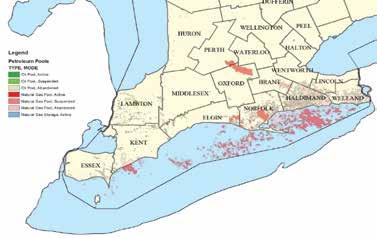
Geology
Southern Ontario is underlain by Paleozoic sedimentary rocks ranging in age from Cambrian to Mississippian (Johnson et al, 1992, Armstrong and Carter, 2010) (Figures 2, 3, 4). These strata attain a maximum thickness of 1,425 metres in southern Ontario, thickening to 4,800 metres and 7,000 metres respectively in the centres of the Michigan and Appalachian basins (Armstrong and Carter, 2010).
A sinuous northeast-southwest basement ridge, the Algonquin Arch, is the dominant bedrock structural feature of southern Ontario, formed by differential crustal movements in response to regional tectonic events (Figure 2). Crustal subsidence formed the Michigan and Appalachian Basin depocentres to the northwest and southeast respectively. Paleozoic strata have very shallow dips, ranging from 3 to 6 m/km southwestwards along the crest of the Algonquin Arch into the Chatham Sag, and 3.5 to 12 m/km down the flanks of the Algonquin Arch into the basins. ridge, the Algonquin Arch, is the dominant bedrock structural feature of southern Ontario, formed by differential crustal movements in response to regional tectonic events (Figure 2). Crustal subsidence formed the Michigan and Appalachian Basin depocentres to the northwest and southeast respectively. Paleozoic strata have very shallow dips, ranging from 3 to 6 m/km southwestwards along the crest of the Algonquin Arch into the Chatham Sag, and 3.5 to 12 m/km
down the flanks of the Algonquin Arch into the basins.
The Paleozoic succession is cut by a number of relatively minor faults, exhibiting both normal and strike-slip senses of movement. Maximum measured displacement is 100 metres. Despite the relatively minor structural deformation of these strata, faults are an important control on the formation of oil and gas traps in the Paleozoic strata of southern Ontario, in particular in Ordovician and Cambrian strata.

The Paleozoic strata overlie a Precambrian basement complex of deformed crystalline metamorphic rocks of the Grenville Province that are over 1 billion years old. Local relief on the Precambrian surface is only a few tens of metres after nearly 500 million years of erosion predating deposition of Paleozoic sediments. All bedrock in southern Ontario is overlain by unconsolidated sediments of largely Pleistocene age, averaging a few tens of metres and ranging up to 200 metres in thickness.
Oil and Gas Plays
All of Ontario’s oil and gas discoveries and production to date are found in
southern Ontario in Paleozoic rocks that are similar to, and extensions of, Michigan and Appalachian basin play types (Figure5). From 1860 to 1989 cumulative production from Appalachian Basin oil and gas reservoirs totaled more than 2.5 billion barrels of oil and 30 tcf of natural gas from the drilling of more than 500,000 wells (Ruppert and Ryder, 2014). This does not include production from the prolific Marcellus and Utica plays with current production rates of 18 bcf/day and 3.7 bcf/ day respectively (EIA, 2016). Cumulative production of oil and gas in the state of Michigan, which encompasses most of the Michigan Basin, from 1925 to the end of 2015, totals 1.34 billion barrels oil and 8 tcf of natural gas, from the drilling of over 56,000 wells (Harrison, 2016).
Commercial quantities of oil and gas in conventional reservoirs have been discovered at several stratigraphic
20 RESERVOIR ISSUE 08 • SEPTEMBER 2016
Figure 1. Oil, gas and natural gas storage pools in southern Ontario. More detail is available in the Pools and Pipelines Map published by the Ontario Oil, Gas and Salt Resources Library (2015).
TECHNICAL ARTICLE
Figure 2. Bedrock geology of southern Ontario, showing Paleozoic sedimentary rock formations and regional structures. The Niagara Escarpment is a prominent physiographic feature on the bedrock surface.
Interval Cumulative Production through 2014

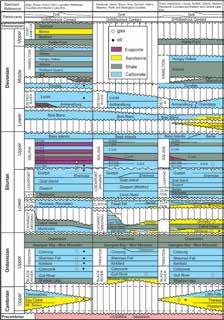
intervals and comprise 5 principal plays:
CAM – structural and stratigraphic traps in Cambrian sandstones and sandy dolomites; ORD – hydrothermal dolomite reservoirs in middle Ordovician limestones; CLI – stratigraphic traps in lower Silurian sandstones and associated carbonates; SAL – reefs and structural traps in middle Silurian carbonates; and DEV – structural traps in Devonian fractured, dolomitized carbonates and sandstones (Lazorek and Carter, 2008). Cumulative production by play is summarized in Table 1.
Potential Resources
There have been 4 quantitative assessments of conventional oil and gas potential in Ontario: Bailey Geological Services Ltd. and Cochrane, R.O. (1984a, 1984b, 1985,
1986, 1990;), Osadetz et al (1996), Golder Associates (2005), and the Canadian Gas Potential Committee (1997, 2001, 2006). Based on these assessments, remaining oil to be produced or still undiscovered at the end of 2014 is estimated to be 190 mmbo (81% beneath the Great Lakes), and 1.45 tcf of natural gas (62% beneath the Great Lakes).
Provisional quantitative estimates of potential oil and gas resources in Ontario were included in regional studies of resources in all of Canada by Hutt et al (1973) and Proctor et al (1983). No rigorous analysis of individual pools or plays was attempted. There have been no commercial discoveries of oil or natural gas in the Hudson Bay/James Bay region of Ontario. Hydrocarbon systems in Hudson Bay are
documented by Lavoie et al (2013) and Hamblin (2008).
The Craigleith Shale Oil Works near Collingwood, Ontario was the site of North America’s first unconventional oil production in 1859. Since that time there has been no discovery of commercial quantities of oil or gas in the subsurface of Ontario and no high-volume hydrofracture treatments have been completed in either shales or conventional reservoirs. No quantitative resource estimate has been completed for unconventional resources in the organic-rich shales of Ontario. Collection of new technical data relevant to assessment of the resource potential of both the Kettle Point (Antrim-equivalent) and Blue Mountain (Utica-equivalent) shales has been completed by the Ontario
RESERVOIR ISSUE 08 • SEPTEMBER 2016 21
(Continued on page 22...)
OIL (m3) OIL (bbls) GAS (x1000 m3) bcf DEV 7,175,000 45,129,000 0 0 SAL 2,401,000 15,102,000 21,168,000 747.5 CLI 6,900 47,300 14,357,000 507.0 ORD 3,951,000 24,851,000 1,225,000 43.3 CAM 839,000 5,277,000 906,000 32.0 Total 14,373,000 90,406,000 37,657,700 1,329.8
Table 1. Cumulative Oil and Gas Production in Ontario, summarized from Oil, Gas and Salt Resources Library (2015).
Figure 3. Geologic cross-section of southern Ontario showing oil and gas-bearing intervals, organic-rich shales, and regional water-bearing intervals coded by water type. Modified from Carter et al (2014).
TECHNICAL ARTICLE
Figure 4. Paleozoic bedrock stratigraphy of southern Ontario showing principal oil and gas producing intervals. Modified from Armstrong and Carter (2010).
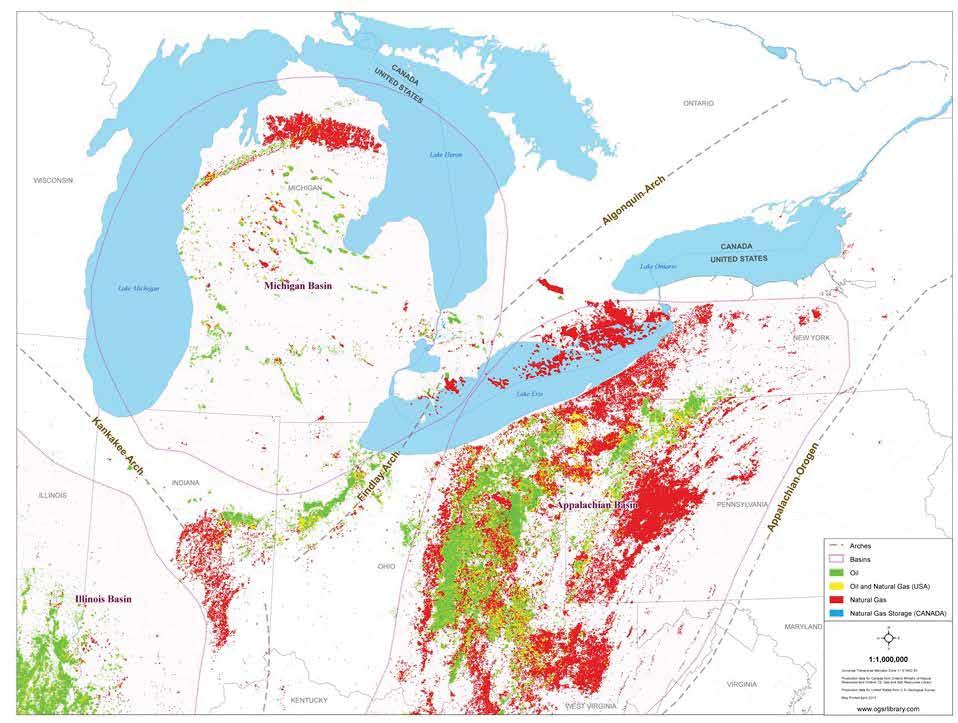
Geological Survey (Béland-Otis, 2015a, 2015b; Béland-Otis, 2012a, 2012b).
Ontario Oil, Gas and Salt Resources Library
Well records and related subsurface geological data collected by the Ontario government from petroleum industry operations are accessible at the Ontario Oil, Gas and Salt Resources Library (www. ogsrlibrary.com). The Library is a unique and very successful not-for-profit public resource centre and data warehouse of information on the subsurface geology and oil, gas, salt and hydrocarbon storage resources of Ontario, and the occurrence and types of deep groundwater in the
bedrock of southern Ontario.
The Library and its data resources are owned by the Ministry of Natural Resources and Forestry (MNRF). It has been operated by the Ontario Oil, Gas and Salt Resources Corporation (OOGSRC) since 1998 as the trustee of the Oil, Gas and Salt Resources Trust (OGSR Trust). The OGSR Trust was formed by the MNRF pursuant to the requirements of S.16 of the Oil, Gas and Salt Resources Act enacted in 1997. The OOGSRC is a wholly-owned subsidiary of the Ontario Petroleum Institute.
Summary
Exploration for conventional resources has
reached a mature stage of development in Ontario, but there still remain many opportunities, including: new pool discoveries in several well-defined plays; large unexplored areas in Ordovician and Cambrian strata; large remaining volumes of oil in discovered pools that could be recovered by technological improvements in secondary/tertiary recovery methods; conversion of additional depleted natural gas pools to natural gas storage; development of new hydrocarbon storage caverns; natural gas reservoirs in areas presently underserviced by pipelines; and new play concepts. There has not yet been any production of oil or gas from unconventional reservoirs in the
22 RESERVOIR ISSUE 08 • SEPTEMBER 2016
TECHNICAL ARTICLE
Figure 5. Oil and gas fields of the northeastern United States and Canada (Ontario Oil, Gas & Salt Resources Library, 2014). Ontario plays are extensions of plays in the neighbouring Michigan and Appalachian basins.
subsurface of Ontario, despite the presence of organic-rich shales in the Kettle Point (Antrim), Blue Mountain (Utica) and Marcellus formations.
Exploration has declined to historic lows in the last few years due to low commodity prices, a problem that is not unique to Ontario. Previous downturns have traditionally been utilized as an opportunity for reassessment of exploration and development opportunities. Advantages of exploration in Ontario include: market access; extensive road, power and pipeline infrastructure, low lease and royalty costs, mainly freehold land with low lease costs, long life reservoirs with low decline rates, local oilfield services, stable regulatory environment, and low drilling, transportation, and service costs.
Editor’s Note: The Ontario Oil & Gas Play article series is a result of the CSPG Ambassador’s Program, which engages Provincial Research and Academic institutions for Canada wide collaboration and knowledge sharing.
References
Armstrong, D.A., and Carter, T.R., 2010. The subsurface Paleozoic stratigraphy of southern Ontario. Ontario Geological Survey, Special Volume 7, 301 p.
Bailey Geological Services Ltd. and Cochrane, R.O., 1984a. Evaluation of the conventional and potential oil and gas reserves of the Cambrian of Ontario; Ontario Geological Survey, Open File Report 5499, 72p.
———1984b. Evaluation of the conventional and potential oil and gas reserves of the Ordovician of Ontario; Ontario Geological Survey, Open File Report 5498, 77p.
———1985. Evaluation of the conventional and potential oil and gas reserves of the Devonian of Ontario (Volume 1); Ontario Geological Survey, Open File Report 5555, 178p.
———1986. Evaluation of the conventional and potential oil and gas reserves of the Silurian sandstone reservoirs of Ontario; Ontario Geological Survey, Open File Report 5578, 275p.
———1990. Geology of selected oil and gas pools in the Silurian carbonates of southern Ontario; Ontario Geological Survey, Open File Report 5722, 50p.
Béland-Otis, C., 2012a. Shale gas potential for the Ordovician shale succession of southern Ontario, Canada. American Association of Petroleum Geologists, Discovery Article #50730, Abstract.
Béland-Otis, C., 2012b. Preliminary results: potential Ordovician shale gas units in southern Ontario; in Summary of Field Work and Other Activities 2012, Ontario Geological Survey, Open File Report 6280, p.29-1 to 29-12.
Béland-Otis, C., 2015a. Upper Ordovician Organic-Rich Mudstones of Southern Ontario: Drilling Project Results. Ontario Geological Survey, Open File Report 6312,59 p.
Béland-Otis, C., 2015b. Geological, Geochemical and Geophysical Data from the Ordovician Shales Drilling Program and the Regional Sampling Program, Southern Ontario. Ontario Geological Survey, Miscellaneous Release Data 326.
Carter, T.R., Fortner, L., Skuce, M.E., and Longstaffe, F.J., 2014. Aquifer systems in southern Ontario: hydrogeological considerations for well drilling and plugging, Canadian Society of Petroleum Geologists and Canadian Well Logging Society, Geoconvention 2014, abstract.
Carter, T.R. and Manocha, J.S., 1996. Underground hydrocarbon storage in Ontario.; Northeastern Geology and Environmental Sciences, vol.18, no. 1/2,, p.73-83.
Golder Associates Ltd, 2005. Hydrocarbon resource assessment of the TrentonBlack River hydrothermal dolomite play in Ontario. Ontario Oil, Gas and Salt Resources Library, 35 p.
Gray, E., 2008a. Ontario’s petroleum legacy: The birth, evolution and challenges of a global industry. Heritage Community Foundation, Edmonton, Alberta, Canada, 100 p.
Gray, E. 2008b. How Canada created the
oil industry. in Oil Industry History, vol.9, no.1, p.11-23, Petroleum History Institute, Oil City, Pennsylvania.
Hamblin, A.P., 2008. Hydrocarbon potential of the Paleozoic succession of Hudson Bay/James Bay: Preliminary conceptual synthesis of background data; Geological Survey of Canada, Open File 5731, 12 p.
Harrison, W.B. III. 2016. Michigan oil and gas annual production; personal communication, Michigan Basin Core Research Laboratory, Michigan Geological Survey, Western Michigan University, Kalamazoo, MI.
Hutt, R.B., MacDougal, T.A., and Sharp, D.A., 1973. Southern Ontario, in R.G. McCrossan, ed., The future petroleum provinces of Canada. Canadian Society of Petroleum Geologists, Memoir 1, p.411-442.
Johnson, M.D., Armstrong, D.K., Sanford, B.V., Telford, P.G., and Rutka, M.A., 1992. Paleozoic and Mesozoic geology of Ontario; in Geology of Ontario, Ontario Geological Survey Special Volume 4, Part 2, p.907-1010.
Kemp, E.L., and Caplinger, M.W., 2007. 19th century petroleum technology in North America. Institute for the History of Technology and Industrial Archaeology, West Virginia University, Morgantown, West Virginia, 179 p.
Lauriston, V., 1961. Blue flame of service. Union Gas Company of Canada, Chatham, Ontario, Canada, 126 p.
Lavoie, D., Pinet, N., Dietrich, J., Zhang, S., Hu, K., Asselin, E., Chen, Z., Bertrand, R., Galloway, J., Decker, V., Budkewitsch, P., Armstrong, D., Nicolas, M., Reyes, J., Kohn, B.P., Duchesne, M.J., Brake, V., Keating, P., Craven, J., and Roberts, B., 2013. Geological framework, basin evolution, hydrocarbon system data and conceptual hydrocarbon plays for the Hudson Bay and Foxe Basins, Canadian Arctic; Geological Survey of Canada, Open File 7363, 200 p.
Lazorek, M., and Carter, T.R., 2008. The oil and gas plays of Ontario. Ontario Petroleum Institute, Ontario Oil&Gas Magazine June 2008, June-Warren Publishing, p.18-27.
(Continued on page 24...) RESERVOIR ISSUE 08 • SEPTEMBER 2016 23
TECHNICAL ARTICLE
McGee, P., 2004. The story of Fairbank Oil. Haines Frontier Printing Limited, Sarnia, Ontario, Canada, 201 p.
Miller, W., 1986. Union Gas: The first 75 years. Union Gas Limited, Chatham, Ontario, 283 p.
Morritt, H., 1993. Rivers of Oil: The founding of North America’s petroleum industry. Quarry Press, Kingston, Ontario, Canada, 194 p.
Ontario Oil, Gas and Salt Resources Library, 2015. Pools and pipelines map of southern Ontario.
Ontario Oil, Gas & Salt Resources Library, 2014. Oil and natural gas production of the northeast map, scale 1: 1 000 000.
Osadetz, K.G., Hannigan, P.K, Carter, T.R. and Trevail, R. 1996. Reappraising petroleum potential in eastern Canada cratonic basins in light of new methods and data: A provisional assessment of the Michigan Basin in southwestern Ontario; in Proceedings, Ontario Petroleum Institute, 35th Annual Conference, Toronto, Ontario, v.35, Technical Paper 11, 19p.
Procter, R.M., Taylor, G.C., and Wade, J.A., 1984. Paleozoic basins-eastern Canada, in
Oil and natural gas resources of Canada 1983. Geological Survey of Canada, Paper 83-31, p.42-43.
Ruppert, L.F., and Ryder, R.T., 2014. Coal and petroleum resources in the Appalachian Basin: Distribution, geologic framework, and geochemical character. United States Geological Survey, Professional Paper 1708.
United States Energy Information Administration, 2016. Monthly crude oil and natural gas production, accessed at http://www.eia.gov/petroleum/ production/.
Strengthen Your Geoscience Career by Joining “GeoMatch”
More and more professionals are actively pursuing mentoring to advance their careers. Whether you are participating as the mentee or mentor, these types of partnerships can benefit your career and develop your skills. Once CSPG has enough interest, we will contact applicants for further information, make matches and email details to participants.
MENTEES:
There are four different categories as outlined below.
Young Geoscience Professionals (35 years old and younger) – who wish for a mentor to accelerate their career
Women in Geosciences – for career networking and support
In-Transition (unemployed) - seeking skills clarification and networking opportunities
Recent Immigrants – professionals who have arrived in Canada within the last 12 months
MENTORS:
Retirees and experienced geoscientists who wish to mentor as a consultant to mentees in the categories above
To sign up for the program please visit www.cspg.org/geomatch and make your selection (please ensure you are signed in to the website), or send an email to This program is only open to CSPG members in good standing.

24 RESERVOIR ISSUE 08 • SEPTEMBER 2016 TECHNICAL ARTICLE



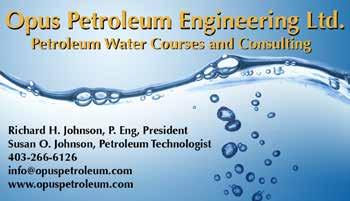
RESERVOIR ISSUE 08 • SEPTEMBER 2016 25
Shop Independant Wellsite Consultants Highly Skilled Competent Consultants Extensive Industry Experience (18 yrs +) Wellsite & Remote Supervision & Geosteering All Types of Conventional & Unconventional Wells Core, Chip Samples & Thin Section Studies International & Domestic Email: indwellcons5@gmail.com Tel: (403) 540-8496 1602 – 5th St N.E. Calgary, AB. T2E 7W3 Phone: 403-233-7729 www.tihconsulting.com e-mail: tih@shaw.ca T.I.H. Consulting Ltd. Geologic Well-Site Supervision Advertise HERE! Contact us today! Email: Kristy.casebeer@cspg.org phone: 403.513.1233 Geological Consulting Services for 35 years Wellsight geological supervision and coring Geo-steering, Petrographic and Sample Studies Conventional & Heavy Plays | SAGD Projects Domestic and International Operations Moh & Associates Oilfield consultants Ltd. Since 1980 Moh Sahota, B.Sc (Hons), M.Sc. President Ph: 403.263.5440 Email: info@mohandassociates.com www.mohandassociates.com PETROGRAPHY AND THIN-SECTION ANALYSIS / X-RAY FLUORESCENCE - IN LAB AND PORTABLE / X-RAY DIFFRACTION / CORE & SAMPLE STUDIES / RESERVOIR CHARACTERIZATION LAB & ANALYTICS info@ProGeoConsultants.com ProGeoConsultants.com 403-262-9229
Rock
2016 CSPG INTERNATIONAL CORE CONFERENCE WRAP UP
On June 23rd-24th 2016, 750 geologists, geophysicists, geochemists, petrophysicists, students and more descended upon the AER Core Research Center for the CSPG International Core Conference. 37 cores were presented from 2 hemispheres, 4 continents, and 6 countries.
The Core Conference theme, “Redefining Reservoir: Core Values” reflected the geologic value we all share: the rocks tell the most important stories in our hydrocarbon quests around the globe. The conference showcased displays from Alberta, British Colombia, Saskatchewan, Ontario, Oklahoma, North Dakota, Brazil, Turkey, Germany, and the UK. Cores displayed spanned unconventional and conventional reservoirs, from clay rich shales to basinal certs, carbonates to siltstone reservoirs, fluvial channels to reefs. A few distinct topics represented the wide range of geologic work outside of exploration, including carbon capture and storage, geochemical and chemostratigraphic applications, multi-disciplinary studies, 3D printing, and digital approaches to core evaluation.
Presentations were packed, and during barbeque lunch provided by Weatherford geoscientists discussed core, the industry, or just caught up with friends
and colleagues. After two days of talking rocks, the Core Meltdown sponsored by AGAT Laboratories did not disappoint, rain notwithstanding: tents were packed and Shale Ale was flowing. The award for best student presentation went to Bryan Turner for “The Use of Chemostratigraphy to Refine Ambiguous Sequence Stratigraphic Correlations in Marine Mudrocks: An Example from the Woodford Shale, Oklahoma”. Best overall presentation went to Cornelius Rott from Germany for “Reservoir Quality of a Diagenetically Altered Shallow Marine Carbonate Interval in the Permian Zechstein (Ca2) East Germany –Implications for Porosity Prediction Using Seismic Inversion Data.”

The CSPG and the 2016 Core Conference Organizing Committee wishes to thank all of the presenters, all of the sponsors
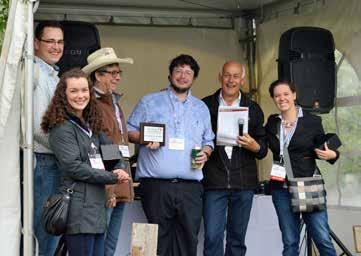
(Tourmaline Oil Corp., AGAT Laboratories, Weatherford, Loring Tacore, Progress Energy and Core Laboratories) ,the volunteers, and of course the AER Core Research Center for making this incredible conference a reality. Visitors from out of town were uniformly impressed, and many international presenters are hoping to return to the hospitality, camaraderie, and technical excellence only found at this unique event, at one of the premier geoscience research centers in the world, the AER Core Research Center.

26 RESERVOIR ISSUE 08 • SEPTEMBER 2016
ARTICLE
Best Student Presentation Award winner Bryan Turner; Picture taken by: Balazs Toro
Delegates observing core samples; Picture taken by: Balazs Toro
Oral presentation in progress; Picture Taken by: Balazs Toro

“ This pioneer and explorer in geology, engineering and natural gas technology bequeathed a fundamental knowledge, years ahead of his time and was considered by many a virtual Leonardo da Vinci of the Petroleum Industry Slipper, our First President, deserved the honour (unbeknownst to him) of our highest award in the Canadian Society of Petroleum Geologists”
- Aubrey Kerr
The gold medal is presented annually for outstanding contributions to oil and gas exploration in Canada. The contributions of the winner of this award should encompass a number of activities related to aspects of petroleum exploration. Such activities include: initiating and/or leading exploration programs, significant discoveries on new or existing exploration trends, teaching and/or training of explorationists, and involvement in and leadership within geological societies and professional organizations.
The committee is currently calling on the CSPG membership to provide additional nominations for this prestigious award. The award winner must be a CSPG member and should be able to attend the awards presentation to be held in the spring of 2017.
Please include an updated biography and letters in support of your nominee. It is recommended that potential nominations be vetted with the Committee Chair early in the process in order to avoid, if possible, duplicate nominations for the same person.
Nominations should be mailed, faxed or emailed before October 15 to:
CSPG Stanley Slipper Committee – Clint Tippett
110, 333 – 5 Ave SW
Calgary, AB T2P 3B6
Email: clintontippett88@gmail.com
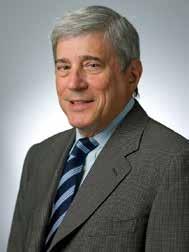

RESERVOIR ISSUE 08 • SEPTEMBER 2016 27
The Stanley Slipper Medal is CSPG’s Highest honour
2015 Stanley Slipper Recipient Dick Walls
Stanley Slipper Medal
2016 STUDENT INDUSTRY FIELD TRIP
By Carson Brown and Noel Devere-Bennett, SIFT Co-Chairs 2016
As with any major undertaking, preparation for the SIFT program begins well in advance. With the program taking place in May, things usually get kicked off from a planning standpoint around September. If we look back to the price of oil in September 2015 it was trading around $46 USD/Bbl WTI, not far off where it is today (July 2016). However, unlike the recent upward trend, nearly a year ago it was only reaching fresh lows, and with its precipitous fall, pocket books were slamming shut with audible force. SIFT has for many years received generous industry sponsorship, enough so that the required funding from the CSPG Foundation has been less than anticipated. The collapse of commodities prices has been an eye-opening experience for our industry and was alarming to those of us charged with overseeing that a nearly 40year old banner program would continue to run. Similar to efforts being made industry wide, the SIFT committee was tasked with reducing costs to maintain the program in the most cost-effective way possible. With prudent committee management and an understanding that pullbacks were necessary, this year’s committee was still able to provide a program that students enjoyed. We’ve achieved budget reductions of nearly 20% without significant impact to the student experience since SIFT 2014.
Most of this cost cutting has been in the form of seeking out cheaper food and accommodation vendors and reducing or eliminating certain non-material costs. By scrutinizing our budget we feel we’ve made important strides towards keeping the program affordable while maintaining the value that it holds for the participants. Going forward we have several line items which we believe can be reviewed next year which will hopefully lower our costs once again in 2017. However, even with these cost reducing measures, hosting over 30 students for a two-week activity-filled program is a costly endeavor and for that we require the support of industry sponsors.
We saw many past sponsors unable to offer funding to the program this year, in addition to many who had declined long standing support last year. Thankfully, several industry sponsors continue to recognize the value in outreach programs such as SIFT and have stood by the program with unwavering support. To our surprise we were even greeted with new donors this year in our time of need. CSPG and the CSPG Foundation have allowed the program to achieve its impressive longevity by generously making up the shortfall from our currently challenged industry. Without the support of industry and the CSPG Foundation, SIFT could not continue

to run. For the generous support from the CSPG Foundation and our many sponsors, the entire SIFT committee and countless students both past (now in every imaginable role across industry) and present we would like to extend a giant THANK-YOU!
The SIFT program is truly a globally unique program. As a testament to the far-reaching reputation of not only the SIFT program, but the Canadian Oil and Gas Industry itself, in our two years as Co-Chairs we have been contacted by students wishing to participate from the United States, Vietnam and Malaysia. At this time we are not accepting international students but always find these requests from abroad both exciting and humbling as to the impact that this program has within industry.
SIFT serves a variety of purposes, from allowing the Calgary market to tap into the student pool across Canada for future employment, to sharing the wealth of knowledge contained within our technical leadership with bright minds keen to expand their geoscience knowledge; both concepts of course not being mutually exclusive! With our budget being met through industry fundraising and the CSPG Foundation’s backing we were able to bring 32 students from 30 universities across Canada to Calgary this year. The course
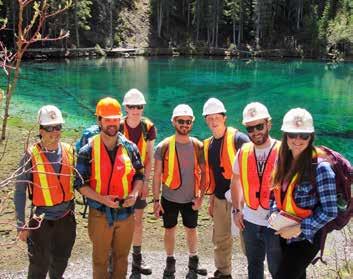
28 RESERVOIR ISSUE 08 • SEPTEMBER 2016
ARTICLE
Photos by Iwona Widurska
agenda includes several downtown lecture sessions, two full-day core sessions at the CRC, industry taught software courses, a comprehensive exploration game, a field day to Dinosaur National Park, and the crown jewel of the program, the 4-Day Rocky Mountain Field Trip.
Each year, leading up to the program the stress and organizational efforts compound until we’re questioning why we’ve signed up for this role yet again. But, after the initial evening ‘ice breaker’ where we meet all the bright faces and memory flashes back to being on the other side, we’re gladly reminded that the months of preparation are more than worth it. The next two weeks are filled with early mornings, late nights, exhaustive discussions, challenging questions, stressful workshops, impressive presentations, countless “lightbulb” moments, and the formation of lifelong friendships. The wrap-up of the program is bittersweet as we showcase the efforts of the game, the highlights of the program, and many goodbyes are said.
A large emphasis of the program is on the Exploration Game, which is played most evenings and late nights throughout the two weeks. The game includes detailed geophysical log interpretation, land bidding, drilling, recompleting, farm-ins, joint ventures, etc. More than half of the students have not been exposed to a well log previous to this trip. It amazes us every year how quickly they progress; from being squiggles on a piece of paper to full blown geological interpretation by the end. The students integrate their knowledge from the provided industry lectures, core workshops and the field trips (both Dinosaur Park day and the 4-Day Rocky Mountain Field Trip) to better understand and create sound geological interpretations of the regional map area.
At the end of the two weeks the teams present their interpretations to a panel of industry judges and compete for the Larry Strong Financial Award and the Bill Ayrton Technical Award. This year the Larry Strong Award was won by team Wirelions Incorporated which consisted of team members Catherine Ross, Robert Meek, Sara Lilley and Pape Doudou Tague. The Bill Ayrton Technical Award was won by team Strata Resources which consisted of team members Lauren Vanderveen, Lesley
Shea, Simon Poirier and Skye Lybbert. It was a very close year in judging and we would like to congratulate all the students for their efforts and the progress made through the program.
This is the value that is being supported by our sponsors and outreach programs such as SIFT. If you look across the industry, surely you know one, if not several, accomplished colleagues who have been a past SIFTEE or in some way have been involved with the program. Every year not only do the students accelerate their geoscience backgrounds, but our volunteers take away valuable learnings from the program. Whether it be from teaching and assisting the students during the Exploration Game or digesting the vast knowledge of the 4-day leaders during the Rocky Mountain Field Trip, this program in a variety of ways benefits a much wider audience than just the target student audience.
In closing we would like to thank the volunteers. We counted over 40 fellow geoscientists who gave their time and energy to put together the SIFT program this year. From the SIFT committee, to the lecture speakers, to the technical leadership there are so many people who contribute to making this program the amazing experience it is and who not only give the program its character, but also form the memories that will last well into the future for those involved.
With that, a final thank you to everyone involved and see you next year…
Diamond Sponsor

Platinum Sponsor

Gold Sponsor Sponsors


Silver Sponsor Sponsors



Bronze Sponsors



In-Kind Sponsors





RESERVOIR ISSUE 08 • SEPTEMBER 2016 29 ARTICLE
CORPORATE SUPPORTERS
Crescent Point Energy Trust
ITG Investment Research
Bannatyne Wealth Advisory Group
EV Cam Canada Inc.
Birchcliff Energy Ltd.
RIGSAT Communications
CAPL
Pro Geo Consultants
Canadian Global Exploration Forum
Encana
Halliburton
RPS Energy Canada Ltd.
Cabra Consulting Ltd.
McDaniel & Associates Consultants Ltd.
ConocoPhillips
Earth Signal Processing Ltd.
Mount Royal University
Richardson GMP
Surge Energy Inc.
Valeura Energy
Compass Directional Services
Integrated Sustainability Consultants Ltd.
TAQA North Ltd.
Navigator Resource Consulting
Baker Hughes Calgary
Roke Technologies Ltd.
Signature Seismic Processing Inc.
to the Board of Directors 2017
CSPG is a not-for-profit corporation registered under the NFP Act. Our mission is: To advance the professions of the energy geosciences - as it applies to geology; foster the scientific, technical learning and professional development of its members; and promote the awareness of the profession to industry and the public.
Directors hold office for two years; commencing January 12 th, 2017. Nomination forms are available on www.cspg.org/Society/Governance Nominations for Directors close September 15 th, 2016.
CSPG is calling for nominations for the Executive Committee:
President Elect – who will continue to serve a total of three (3) years comprised of the first year as President Elect, the second year as President and the third year as Past President.
Finance Director Elect – who shall serve a two (2) year term comprised of the first year as Finance Director Elect and the second year as Finance Director
Four Directors At Large – each year CSPG elects Directors to fill portfolios. For 2017, CSPG is interested in attracting new Directors to cover such portfolios as Education, Publications, Outreach, & Young Geoscience Professionals. Please express your interest on the Nomination form.
Please note that only FULL Members of CSPG can be nominated
The Nomination Process:
CSPG Nominating Committee recruits for potential directors. You may submit your nomination for their consideration. Alternatively, if you support your nomination with 25 Full Member signatures, you can stand for election.
The Nomination form and Nomination Signature form must be submitted by September 15th, 2016 to Lis.Bjeld@cspg.org to the attention of Past President.
AS OF JULY 26, 2016 30 RESERVOIR ISSUE 08 • SEPTEMBER 2016
Please direct any questions to Lis Bjeld, CSPG Executive Director at 403-513-1235
2016 Ph.D and M. Sc. CALL FOR THESES
Ph. D. AWARD
Win $5,000, a framed certificate, and a one-year CSPG membership for the Doctoral thesis that makes the most significant contribution to Canadian sedimentary geology in 2016.
M. Sc. AWARD
Win $4,000, a framed certificate, and a one-year CSPG membership for the Masters thesis that makes the most significant contribution to Canadian sedimentary geology in 2016.
Winning thesis in recent years have included: a detailed stra�graphic, sedimentological and geochemical study of the mudstone dominated Carlile Forma�on in Eastern Alberta with a focus on advancing the model for the deposi�on of mudstones; a sedimentological and neoichnological examina�on of a modern mixed energy estuary at Tillamook Bay on the coast of Oregon; a re‐interpreta�on of the classic Silurian reefs in Southern Ontario and Michigan; an integrated analysis of the evolu�on of the passive con�nental margin off the coast of Nova Sco�a incorpora�ng the extensive seismic data set acquired in the last 25 years; evaporate diapirism in the Canadian Arc�c Archipelago; and detailed integrated studies on the Upper Cretaceous Peace River, Lower Cambrian Gog and Upper Devonian Hondo forma�ons
DEADLINE FOR SUBMISSIONS IS SEPTEMBER 16, 2016
For submission, an electronic copy (.pdf format) of the thesis is preferred but a hard copy if properly bound will be accepted. Submitted hard-copy theses will be returned in late January 2017.
Eligible theses are either produced in a Canadian university, regardless of project loca�on, or deal with a Canadian sedimentary/petroleum geology topic, regardless of the university of origin. Theses entered for the 2016 awards must have been submi�ed to a recognized university inside or outside of Canada and must have formed part of the requirements for degrees awarded at the Fall 2015 or Spring 2016 convoca�ons.
Candidates theses must be well wri�en and clearly and adequately illustrated
Please submit electronic copy of thesis for judging to:
Canadian Society of Petroleum Geologists (CSPG)
Graduate Thesis Awards Commi�ee
c/o Andre Chow
amcchow@gmail.com
For submission of a hard copy thesis or addi�onal informa�on please contact Andre Chow at the above email or tel: 587‐777‐2154

The 2017 Mountjoy Conference , sponsored by SEPM (Society for Sedimentary Geology) and CSPG (Canadian Society of Petroleum Geologists), will be held the week of June 26-30, 2017 in Austin, Texas, at the University of Texas Learning Commons and the Bureau of Economic Geology Core facility. With the theme “Characterization and Modeling of Carbonate Pore Systems,” the conference will showcase new approaches and results through oral and poster sessions as well as core workshops and fieldtrips.
The theme is broad, encompassing the:
• stratigraphic, facies and diagenetic influences on varied pore systems;
• petrographic, geochemical and visualization tools applied to enhanced characterization of pore systems, from nano- and micro-scale, to fractures and cavernous pores; and
• new approaches for modeling the origin and distribution of pore systems.
Integrated case studies from academia and industry are of particular interest.
One of the highlights of the 1st Mountjoy meeting in 2015 was the opportunity for individual discussion and interaction between the attendees and the presenters. The 2017 Mountjoy Conference will continue to stress the importance of dedicated time for discussion and one-on-one networking throughout the program.



ORGANIZING COMMITTEE:
Paul (Mitch) Harris pmitchharris@gmail.com
Gene Rankey grankey@ku.edu
Don McNeill dmcneill@rsmas.miami.edu
Jean Hsieh jhsieh@repsol.com
Astrid Arts Astrid.Arts@cenovus.com
Scott Tinker scott.tinker@beg.utexas.edu
Laura Zahm LAZ@statoil.com

































































